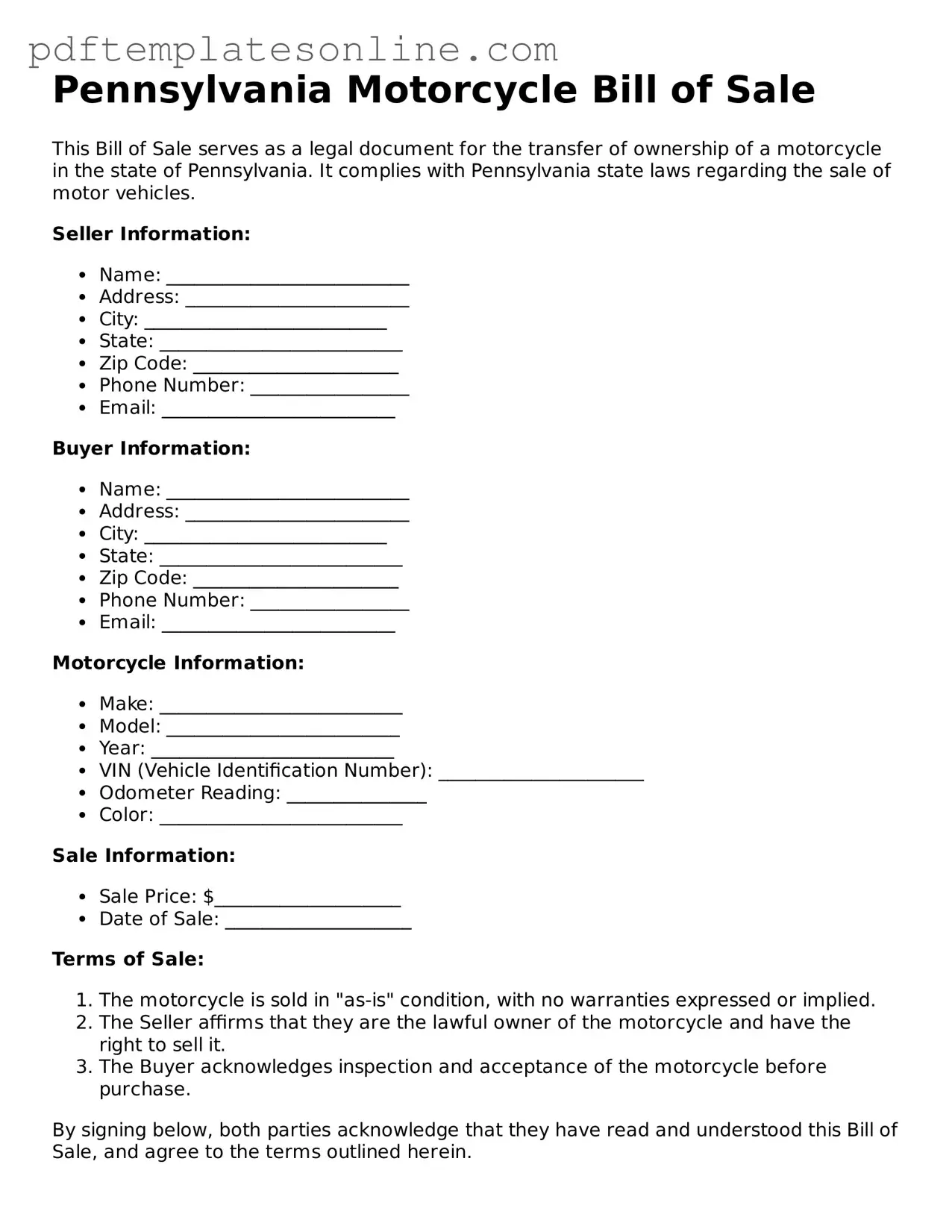Official Pennsylvania Motorcycle Bill of Sale Document
The Pennsylvania Motorcycle Bill of Sale form is a legal document that serves as proof of the sale and transfer of ownership of a motorcycle in Pennsylvania. This form is essential for both buyers and sellers, as it outlines important details such as the purchase price, vehicle identification number (VIN), and the names of both parties involved. Properly completing this form can help prevent disputes and ensure a smooth transaction.
Access Motorcycle Bill of Sale Editor Now
